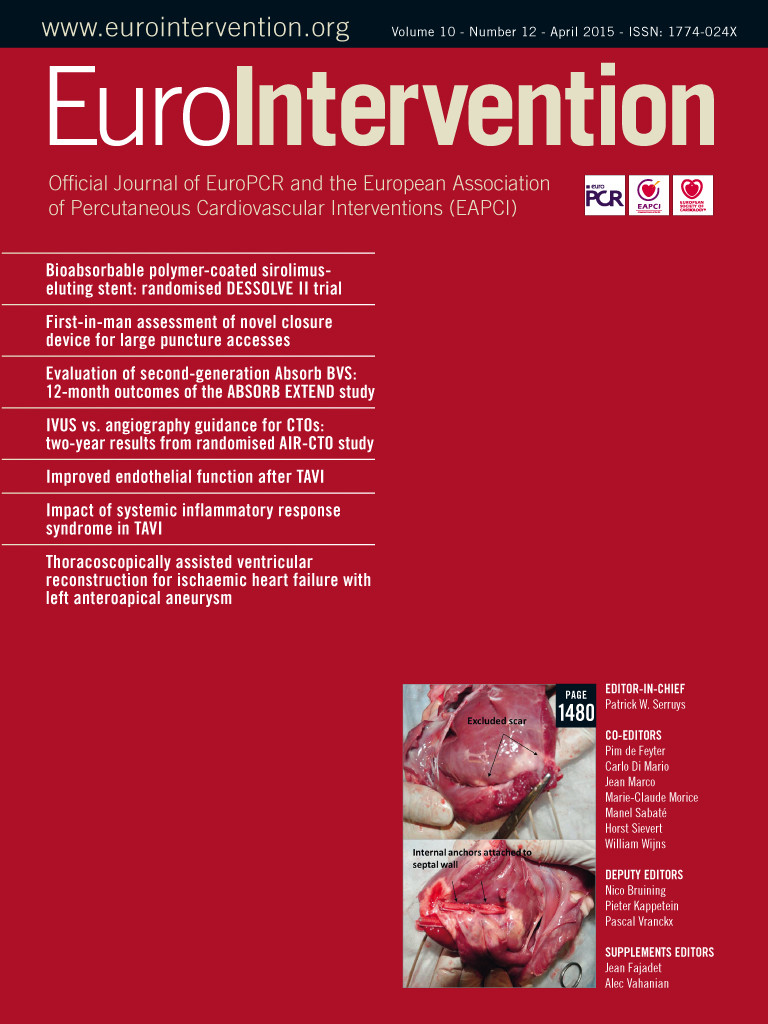A 51-year-old man with non-ST-segment elevation myocardial infarction was admitted for coronary angiography which revealed thrombotic occlusion in a segment containing two overlapping CYPHER® stents (Cordis, Johnson & Johnson, Bridgewater, NJ, USA) implanted two years earlier. The patient had a family history of ischaemic heart disease and was previously treated with percutaneous coronary intervention in the right coronary artery and in the circumflex artery (Cx). Optical coherence tomography was performed prior to predilatation and showed well-apposed stents, complete coverage and in-stent hyperplasia with neoatherosclerosis, especially in the distal part (Figure 1A). A plaque rupture containing white thrombus material was identified (Figure 1B) and more proximally we found deposits of white and red thrombus material. Stent struts covering the origin of the first marginal branch were covered and free of thrombus material. A third stent more proximal in the Cx showed evagination but full coverage without evidence of thrombus.
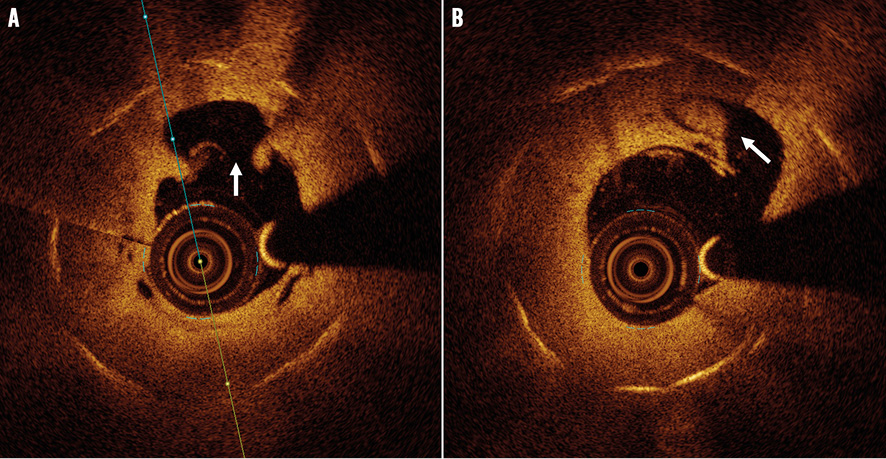
Figure 1. OCT findings. A) Intimal hyperplasia with plaque rupture (arrow). B) White thrombus in relation to rupture site (arrow).
The case demonstrates rupture in a neoatherosclerotic plaque as a mechanism behind very late stent thrombosis (Appendix Figures).
Conflict of interest statement
L.O. Jensen has received an unrestricted research grant to the institution from St. Jude Medical. The other authors have no conflicts of interest to declare.
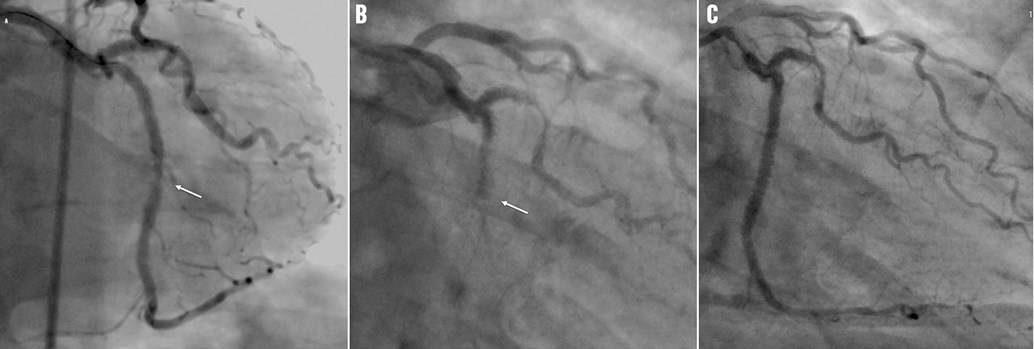
Appendix Figure 1. Coronary angiogram findings. A) Narrowing of the Cx seen in relation to earlier PCI of RM1 (arrow). B) Thrombotic occlusion of the Cx (arrow). C) Final result after PCI.
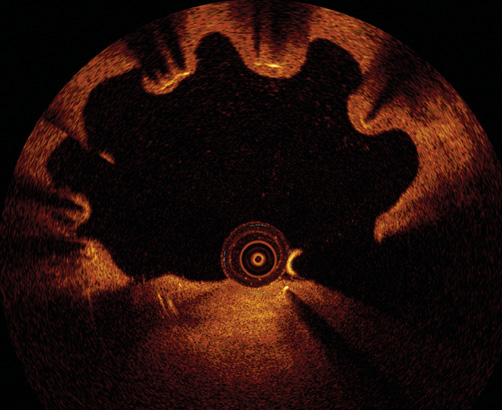
Appendix Figure 2. OCT findings. Malapposed but covered stent struts in the more proximal stent in the Cx possibly due to evagination.
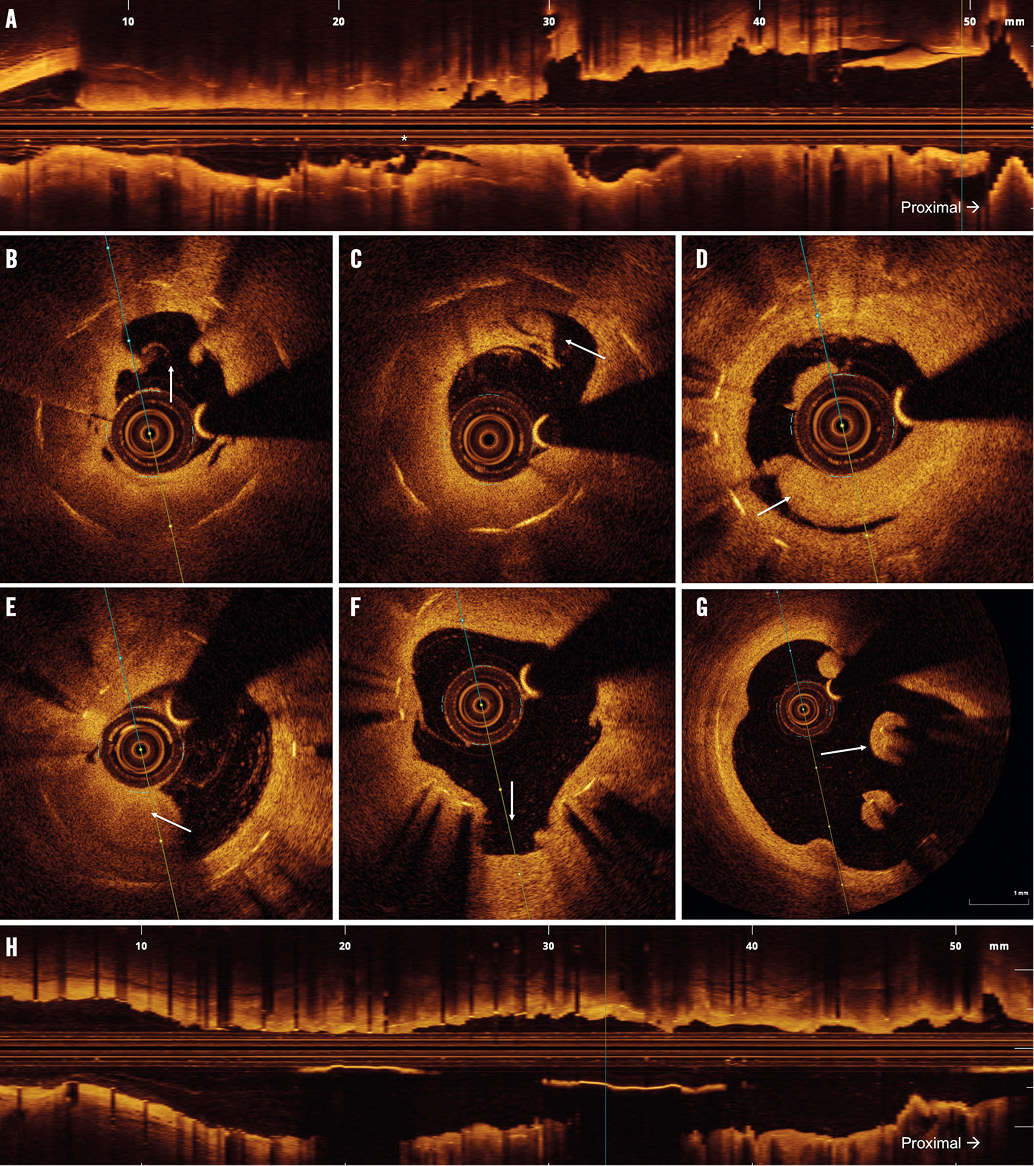
Appendix Figure 3. OCT findings. A) Longitudinal overview of the thrombosed segment. Blood in the proximal part (*) marks the plaque rupture site. B) Intimal hyperplasia with plaque rupture (arrow). C) & D) White thrombus in relation to the rupture site (arrow). E) Red thrombus proximal to the rupture site (arrow). F) Thrombus occluding minor side branch. G) Malapposed but covered stent struts at the origin of RM1. H) Longitudinal overview after additional stenting.
Online data supplement
Moving image 1. OCT pullback prior to PCI.
Moving image 2. OCT pullback after PCI.
Supplementary data
To read the full content of this article, please download the PDF.
